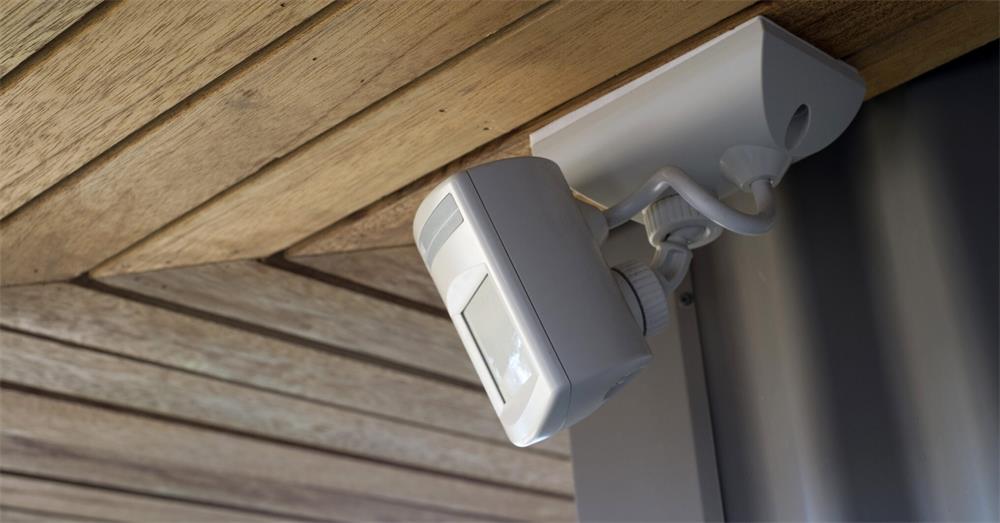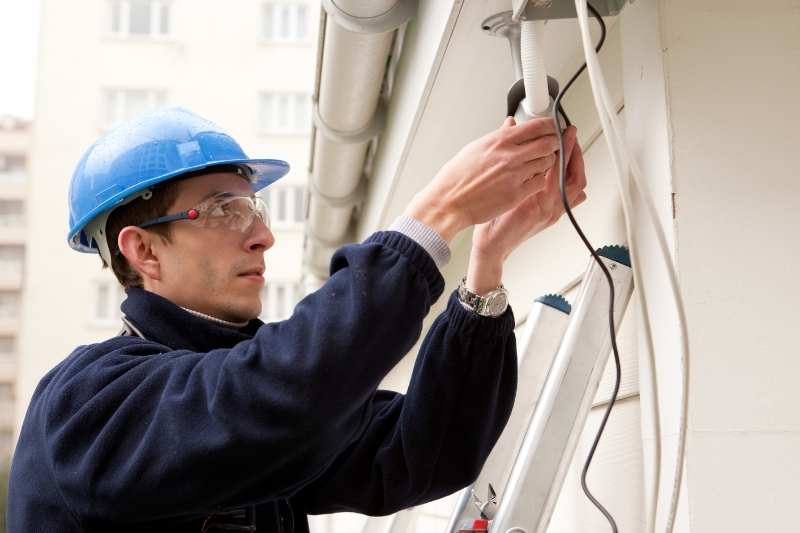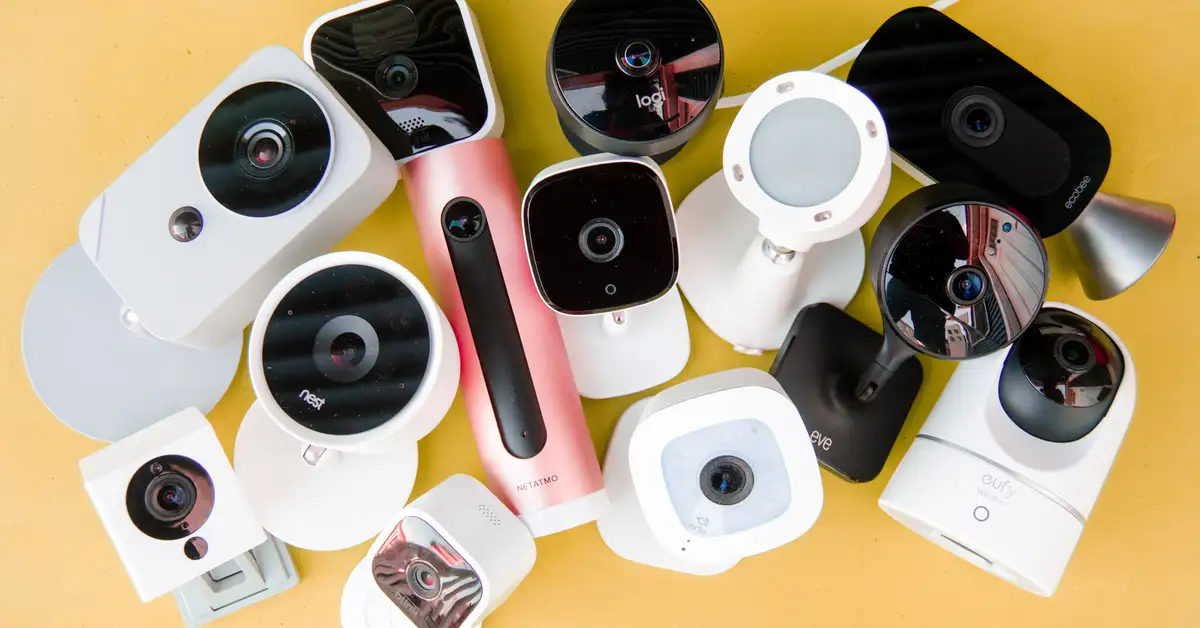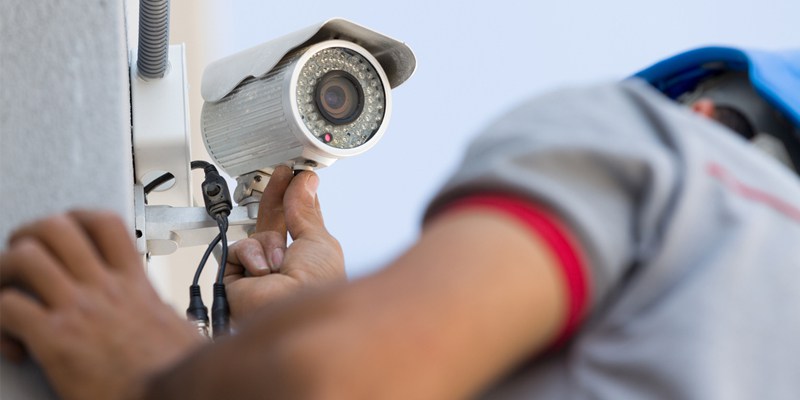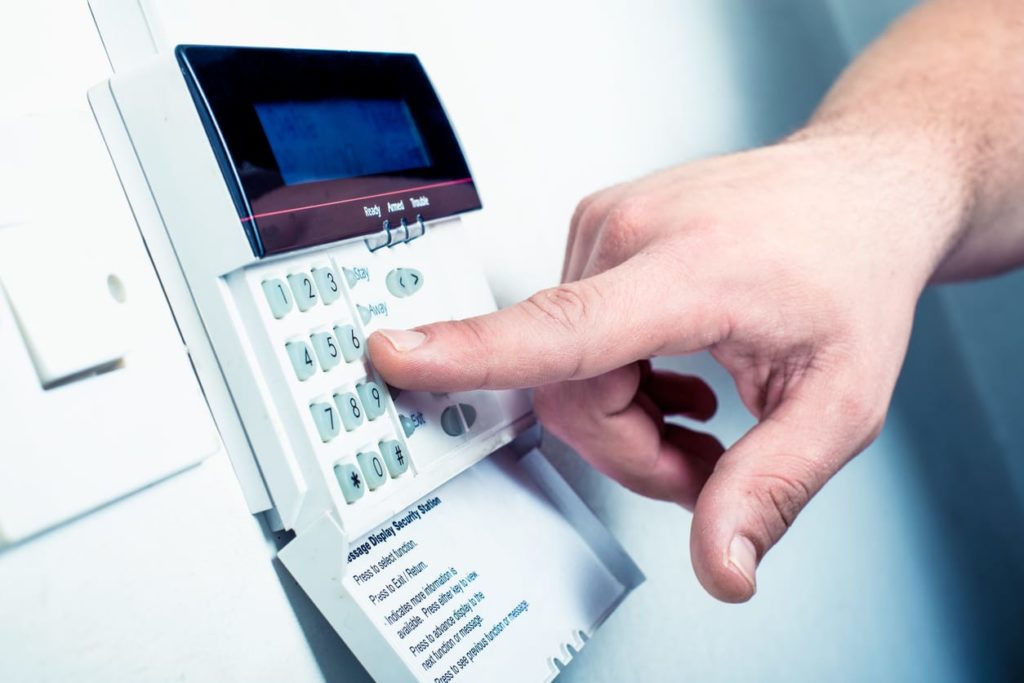Contents
- 1 Introduction
- 2 Types of Motion Sensors
- 3 Placement of Motion Sensors in a Home Security System
- 4 How Motion Sensor Works with Other Components in a Home Security System
- 5 Benefits and Limitations of Using Motion Sensors in a Home Security System …
- 6 Benefits and Limitations of Using Motion Sensor in a Home Security System
Introduction
Home security is a major concern for homeowners all across the globe. With the rise in technological innovations, homeowners now have access to various home security systems that can help them protect their property and loved ones. One of the most important components of a home security system is motion sensors.
Definition of Motion Sensors
Motion sensors are electronic devices that detect motion within a specific area. They work by detecting changes in infrared radiation, microwaves, or other types of electromagnetic signals caused by movement within the monitored area. Most motion sensors are designed to detect human movement, but they can also detect animal movement as well.
Importance of Home Security Systems
The importance of home security systems cannot be overstated as they are essential to keeping homes and families safe from intruders. These systems provide an added sense of peace and comfort by alerting homeowners immediately when there is any unauthorized entry into their homes.
A home security system typically consists of a central control panel that communicates with different components such as door and window sensors, motion sensors, alarms, cameras, and mobile apps. It is an integrated system that provides complete protection to your home.
Overview of the Role of Motion Sensors in Home Security Systems
Motion sensors play a crucial role in home security systems by detecting unauthorized entry into your property even before it happens. They help homeowners keep their homes safe from burglars or intruders who may try to enter through windows or doors.
Motion sensors work by constantly monitoring the designated areas for movement and when detected; they trigger an alarm or alert you via notifications on your mobile app depending on how you have configured them. Motion sensors form an integral part of any home security system as they provide an early warning system that detects any unauthorized entry into your property.
They work alongside other components such as cameras, alarms, and mobile apps to ensure that homeowners have complete control and security over their homes. In the following sections, we will delve deeper into motion sensors by exploring different types of motion sensors and how they work as well as benefits and limitations of using motion sensors in a home security system.
Types of Motion Sensors
Motion sensors are the backbone of any home security system. They are designed to detect movement within an area and alert the homeowner or monitoring service when they sense unauthorized activity. There are three types of motion sensors used in home security systems: passive infrared (PIR) sensors, microwave sensors, and dual technology sensors.
Passive Infrared (PIR) Sensors
Passive infrared (PIR) sensors are the most commonly used type of motion sensor in home security systems. These sensors use heat sensing technology to detect changes in temperature within their field of view. PIR sensors work by detecting the infrared radiation emitted by humans and animals that move within their range.
When a PIR sensor detects a change in temperature, it sends a signal to the control panel of your security system, which triggers an alarm. Since PIR sensors only detect changes in temperature, they are less likely to be triggered by false alarms caused by things like moving curtains or shadows.
How PIR Sensors Work
PIR sensors consist of two components: a sensor that detects changes in temperature and a lens that focuses on a specific area. When an object moves across the field of view, it causes a change in temperature that is detected by the sensor. The sensor then sends a signal to the control panel which activates an alarm.
Advantages and Disadvantages of PIR Sensors
One advantage of using PIR sensors is that they are less likely to trigger false alarms compared to other types of motion detectors like microwave and ultrasonic detectors since they only detect changes in heat signatures produced by living beings. However, one disadvantage is that they have limited detection range as their sensitivity decreases with distance from source due to obstructions such as walls or furniture blocking line-of-sight with target areas.
Microwave Sensors
Microwave sensors are another type of motion sensor used in home security systems. They use radio waves to detect movement within their range. When an object moves, it causes a change in the microwave frequency, which is detected by the sensor and triggers an alarm.
How Microwave Sensors Work
Microwave sensors emit low-powered electromagnetic waves that bounce back when they encounter objects within their range. The sensor measures the time it takes for the waves to return and calculates the distance of the object from the sensor. If an object moves closer to or away from the sensor, it changes the frequency of these waves and triggers an alarm.
Advantages and Disadvantages of Microwave Sensors
One advantage of microwave sensors is that they can detect movement through walls or other barriers since they don’t rely on line-of-sight detection like PIR sensors do. However, one disadvantage is that their sensitivity might lead to false positives caused by electronic interference from other household appliances such as TVs or radios.
Dual Technology Sensors
Dual technology sensors are a combination of PIR and microwave sensors, designed to reduce false alarms by requiring both types of detection before triggering an alarm. When both technologies detect movement simultaneously, it confirms that there is indeed a person moving within its field-of-view.
How Dual Technology Sensors Work
These sensors use two different technologies to detect motion: passive infrared (PIR) and microwave. The PIR technology senses changes in heat while microwaves detect motion based on frequency shifts that occur when objects move through space at different rates than stationary ones around them.
Advantages and Disadvantages of Dual Technology Sensors
Dual technology offers greater reliability than either PIR or microwave alone since they eliminate most false alarms caused by environment factors such as pets or wind-blown curtains. However, one disadvantage is that they are more expensive than either PIR or microwave sensors. Additionally, these sensors require more energy for operation than their standalone counterparts, increasing the cost of operating a security system.
Placement of Motion Sensors in a Home Security System
The placement of motion sensors is critical to the effectiveness of a home security system. Ideally, the sensors should be placed in areas that provide maximum coverage while minimizing false alarms caused by pets, insects or other sources of movement. However, there is no one-size-fits-all solution when it comes to placement, as every home and its layout vary.
Common areas to place motion sensors
The most common areas for placing motion sensors include the living room, kitchen, bedrooms and hallways. These rooms are often high traffic areas where an intruder might pass through on their way to steal valuables or cause harm. The living room and kitchen are particularly important because they often have large windows or doors that can be used as entry points if not properly secured.
For larger homes with multiple levels, it’s important to place sensors on each floor. The front door should have a sensor as well as any back or side doors leading outside from the main living area.
Tips for optimal placement for maximum security
When placing motion sensors in your home security system, there are several tips you can follow for optimal placement: 1) Angle: Ensure that all sensors are angled towards the ground rather than facing straight outwards from walls or ceilings.
This will help avoid false alarms caused by objects moving outside. 2) Height: Consider placing your sensors at different heights throughout your home such as at waist level or above windows and doors so they can detect movements both from people standing up and crawling near any entry points leading into your house.
3) Distance: Place your sensor far enough away from any significant sources of heat such as air ducts or radiators so that they don’t trigger falsing signals unless such movements occur nearby such objects. 4) Obstructions: Avoid placing any obstructions in front of the sensor that could block its view or cause it to misinterpret the movement.
Examples of such obstructions include large furniture, curtains, or other objects that can sway and create false alarms. 5) Sensitivity: Set your motion sensor’s sensitivity according to the number of people who live in your home and their normal daily activity pattern.
For instance, if you have children or pets doing normal daily household activities, set your motion sensor’s sensitivity lower. Placement of motion sensors in a home security system is critical for effective security measures.
Placing these sensors in areas where intruders are likely to enter and avoiding false alarms will ensure maximum protection for you and your family. Following these tips will help optimize placement so that any potential threats can be detected early on before they escalate into bigger problems.
How Motion Sensor Works with Other Components in a Home Security System
Motion sensors are just one component of a home security system. These systems work together with other components to provide comprehensive protection for your home and loved ones. In this section, we will discuss how motion sensors work with other components such as alarms and alerts, cameras, and mobile apps.
Alarms and Alerts
When motion is detected by a sensor in the home security system, it sends an alert or signal to the control panel. From there, depending on the settings you have chosen or programmed, an alarm may sound or an alert may be sent to your mobile device through a push notification or text message. In some systems, the alarm may also trigger outdoor lights to turn on automatically.
The ability to customize alarms and alerts is an important feature of home security systems. Some systems allow you to choose different types of sounds for different alerts – for example, a loud siren for an intruder alert versus a less jarring tone for a notification that one of your children has arrived home from school safely.
In addition to sounding alarms when motion is detected within the house itself, some systems offer monitoring services that can contact authorities if necessary. This can provide additional peace of mind when you’re away from home.
Cameras
Another component that works well with motion sensors in a home security system are cameras. Cameras can help provide additional visual information about what’s happening in your house during an event where motion was detected.
For example, if you receive an alert that motion was detected in your living room while you’re away from home, you can check your camera feed through your mobile app to see if there’s anything suspicious happening. Cameras also greatly assist law enforcement officials should they need evidence to support an investigation.
When choosing a home security system with cameras, consider the resolution and field of view of the cameras, as well as where they are located within your home. You may want to place them in areas where motion sensors are also located for optimal coverage.
Mobile Apps
Mobile apps have revolutionized home security systems by providing real-time access to your system’s alerts, alarms, and cameras from anywhere you have an internet connection. Many mobile apps allow you to arm and disarm your system remotely or customize notifications based on your preferences.
With mobile apps, you can receive push notifications when someone enters or exits your home or if a door is left open. You can also check on pets or family members while away from home by accessing camera feeds through the app.
The convenience of controlling a home security system remotely through a mobile app has made it easier than ever to keep tabs on what’s happening at home while you’re away.
Benefits and Limitations of Using Motion Sensors in a Home Security System …
Benefits and Limitations of Using Motion Sensor in a Home Security System
Benefits: Ease-of-use
One of the most significant benefits of using motion sensors in a home security system is their ease-of-use. Unlike other home security systems that require complex configuration and installation, motion sensors can be easily set up within minutes without professional help. Typically, users only need to follow the manufacturer’s instructions to get started.
Another advantage is that motion sensors require minimal maintenance. Since they are usually wireless and powered by batteries, you don’t have to worry about cables or power cords running across your home.
Moreover, modern motion sensors come with long battery life, allowing them to run for several months without needing a replacement. The ease-of-use also extends to how you interact with the system.
Most modern home security systems with motion sensors include mobile apps that enable you to monitor your home from anywhere in real-time. These apps are easy-to-use and provide a clear view of your property’s activity.
Limitations: False Alarms
While motion sensors offer several benefits, they also have some limitations that homeowners should be aware of before investing in them. One significant disadvantage is false alarms.
Motion sensors can trigger false alarms due to factors like pets or environmental conditions such as strong winds or falling leaves. Although modern systems use advanced algorithms designed to filter out false alarms, there is still some room for error.
False alarms can be frustrating for both homeowners and authorities that respond to them since they waste time and resources unnecessarily. Therefore, it’s essential to select the right type of sensor based on your specific needs and ensure proper placement.
Benefits: Cost-effective
Another benefit of using motion sensors is their cost-effectiveness compared to other types of security systems like cameras or smart locks. Motion sensors are relatively affordable, making them ideal for homeowners on a budget. Moreover, since they don’t require any significant installation or maintenance costs, they are a low-cost solution to keep your home safe.
Limitations: Limited Range
One limitation of motion sensors is their limited range. Typically, sensors have a range of about 30-40 feet, which can be limiting if you have a large property.
Moreover, motion sensors can only detect motion within the area they are placed in; therefore, multiple sensors may be required to cover larger areas. However, adding too many sensors may result in false alarms due to overlapping coverage.
Conclusion
Motion sensors are an effective and cost-effective way to secure your home. They are easy-to-use and require minimal maintenance.
Although they have some limitations such as false alarms and limited range of coverage, modern systems have overcome these challenges through advanced algorithms and multiple sensor deployment. Overall, investing in a home security system with motion sensors is an excellent way to protect your property and loved ones while enjoying peace of mind.

